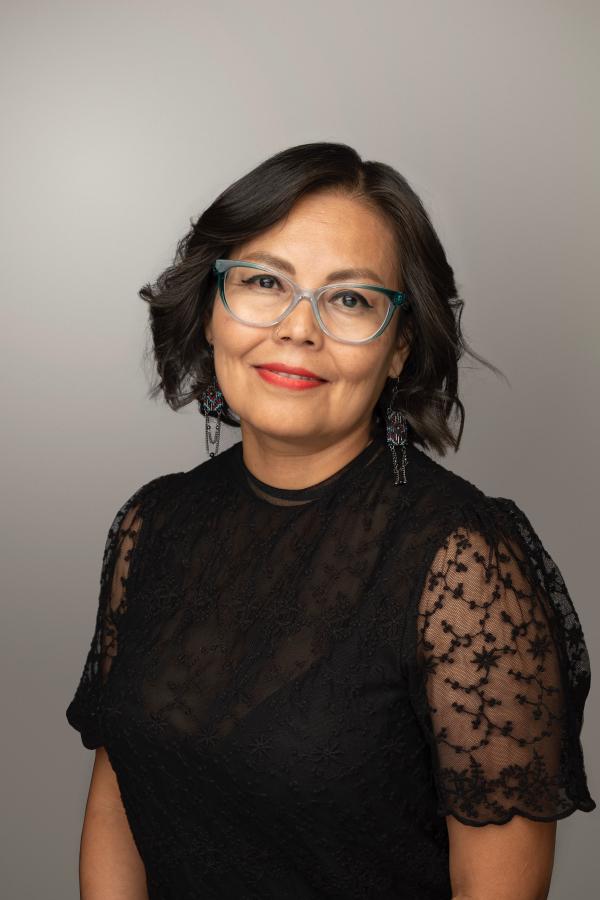The ASU-LACMA Master's Fellowship in Art History—developed by LACMA and the Herberger Institute for Design and the Arts at Arizona State University (ASU)—was established to combine academic training and work experience to advance the careers of a new generation of curators, directors, and other museum professionals who are committed to increasing equity and inclusion and engaging new perspectives, cultures, and backgrounds.
The three-year fellowship is intended to complement and expand the important programs at LACMA that help diversify the ranks of curators and other professionals in art museums. Pairing rigorous academic instruction through traditional master's-level coursework and a thesis with on-the-job work experience, staff from the partner museums who are selected as fellows enroll in two courses per semester remotely, and fulfill language, professional development, and research requirements while continuing in their current role at their respective museums. Fellows receive access to resources at LACMA and the Herberger Institute, and upon completion of the program, receive a master's degree in Art History from ASU. The program is also pleased to welcome the Pérez Art Museum Miami, the Heard Museum, Phoenix, the Phoenix Art Museum, and the Memphis Brooks Art Museum as partners with LACMA and the ASU Art Museum, giving their staff the ability to participate as Fellows.
We recently caught up with the current Fellows to learn more about their experiences in the program. Below, meet Velma Craig.
What is your role at the museum?
I am assistant curator at the Heard Museum in Phoenix, Arizona.
What drew you to the ASU-LACMA Master's Fellowship in Art History program?
Before I was hired on as assistant curator in 2020, I was an Andrew W. Mellon Curatorial Fellow for three years. In one of those early years, I somehow found out about the ASU-LACMA fellowship program and thought it sounded like a wonderful opportunity and a great program. I mentioned this to the director at our museum as something to explore. A couple years later, the Heard Museum became a partner, and I was someone who was able to participate. I have been wanting to pursue my graduate degree for some time but haven’t felt like I could afford to leave work. It would be very difficult, even with a scholarship.
What does a "day-in-the-life" of an ASU-LACMA Fellow look like?
Mostly, I go to work from morning to evening. I attend two classes per semester. Classes are weekly. I have not had a class that meets more than once per week, yet. This semester, I leave a little early on Wednesdays to attend class. At work, we are currently installing an exhibition on basketry that opens at the end of the week, so since we have all of the writing finished and labels and graphics ordered, today feels a little slow. It will pick up again soon, though.
Every evening, I leave work at work and do my reading and homework for classes that week. I visit the gym, too, but it becomes inconsistent when the semester is in session because there’s just not enough time.
What has been the most interesting or rewarding part of the fellowship so far?
I really like being in the classroom and having discussions about various art-related topics. I have most enjoyed getting to know the other cohort members of the ASU-LACMA program, as well as faculty and program department members. The friendship and support they provide has been very meaningful.
What has been the most challenging part of the fellowship?
The challenge for me has been narrowing down my thesis focus. I am still very much exploring, and so far no one has made me feel pressured to make a decision, but it’s always on my mind.
Another challenge has been the lack of courses focusing on the area of American Indian art. There has been coverage of American Indian artists and exhibitions focusing on American Indian art, but it is necessary to have courses in which these are the topics. I know the program leadership is working on fixing this, and I hope also that these courses, when they become available, are taught by professors who are Native, as well.
How has the experience influenced your career focus or future goals?
If anything, the experience has given me more options for where my career may lead.
What subject(s) do you plan to focus on in your Master's thesis?
I am still sorting it out, but I am interested in weavers of Navajo textiles who weave outside of the regional or non-trading post inspired designs. I am also interested in the values that drive what fills a collection in tribally-owned museums and culture centers versus Western museums and how that impacts storytelling.



